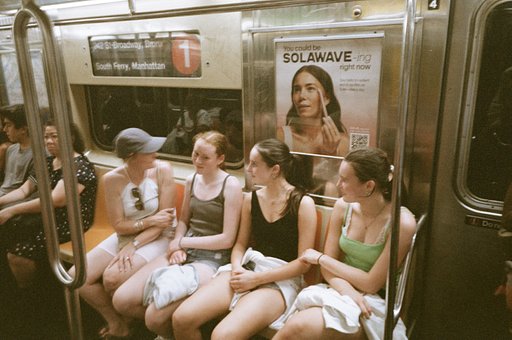Day And Night: Jaume Creus Catches Colors With The LC-A Minitar-1
17 Share TweetAfter featuring Jaume Creus' gorgeous nighttime photography in this article, the Canadian photographer expressed great interested in shooting our Lomo LC-A Minitar-1 lens one day. And because one day might as well be today, we let him borrow the lens to see how it works for him and his photographic style. Jaume tested it in both, day and night shooting adventures and shares his results and experience with us.
Welcome back to the Lomography Magazine, Jaume! Please introduce yourself to our readers, who might have missed your last feature.
Hey Lomography! First of all thanks for letting me play with this great lens! My name is Jaume Creus, I’m a visual effects artist from Barcelona, now based in Vancouver, and in my spare time, I guess I’m a street photographer.
You got to try out the Lomo LC-A Minitar-1 Lens for this series. Why were you interested in testing this lens and what was your experience with it?
This lens called my attention mainly for its size and design. I love small cameras and small lenses. I always try to keep my gear as small and light as possible. Also, I tend to shoot street with my Leica M6 and a 35mm lens, this lens being a 32mm and Leica M-Mount was a perfect match for my daily setup!
What worked best with the Minitar Lens?
This lens is super light and the size surprised me, it literally looks like a body cap and makes the setup fit in my jacket pocket!
Focusing with the clicked focus knob (0.8m / 1.5m / 3m / INF) is great for quickly setting up my focus by feeling and that’s amazing for shooting quick candid snaps on the street. I have to say that the aperture was not as easy to reach and it doesn’t have clicks.
Leica bodies have 35mm framelines and that scared me a bit at the beginning, since this is 32mm. But it honestly worked out great for me because this lens, like the LC-A, it’s sharp in the center, and at the same time, soft and vignette on the edges; it lets me frame with the 35mm lines with some extra space on the edges that most likely will get that soft/vignette look.
What are you looking for when you're out in the street shooting?
I really work by impulse, but I can see I have some patterns when shooting on the streets. For instance, I’m really attracted by vivid colors, timeless looking people and places and artificial lights at night.
Both, the day and night shots are incredibly vibrant and colorful. How did you achieve those colors?
As I said I have a thing for colorful situations when I’m out shooting. I also tend to underexpose a bit during the day to get those colors a bit more vibrant. However, Lomography Color Negative 35mm ISO 800 is already a film with really vivid and warm colors and you can always push it even more when grading the pictures.
How do you go about your night-time adventures. Do you plan out your shoot before or do you simply start walking and see where you end up?
I never plan and that’s what I love about street photography. You don’t need a specific location or a model, you just go out and walk. I think that’s what I enjoy the most about going out shooting; finding new places, candid moments and different lighting situations that are totally random and out of my control.
Working in the film industry, you told us in your last interview that you're drawing a lot of inspiration from that. Do you have a top 3 of visually inspiring movies?
That’s a tricky question, I have so many movies in that list that I don’t think I can give you just 3!! Here’s my last 3 movies that inspired me recently and were all shot on film : Once Upon a Time in Hollywood (Robert Richardson) / Blackkklansman (Chayse Irvin) / Bad Times at the El Royale (Seamus McGarvey).
Any advice for wanna be night-time adventurers out there?
Shooting film at night can be tricky at the beginning cause light meters get confused and your lens aperture plays a big part, being the ISO is so limited. Some people use tripod but I’m more of a handheld shooter and I tend not to go under 1/60th. But I honestly feel that the best advice is to go out, shoot and experiment, you will quickly start to understand how the film and your camera reacts to every light situation.
For me shooting at night is a way to escape from the daily routine so I take it as an intimate moment, a way to relax and disconnect. You should do the same! :)
See more of Jaume's work on his Instagram and his website
written by birgitbuchart on 2019-08-26 #gear
































No Comments